Gifu's Must See Places
Shirakawa-Go
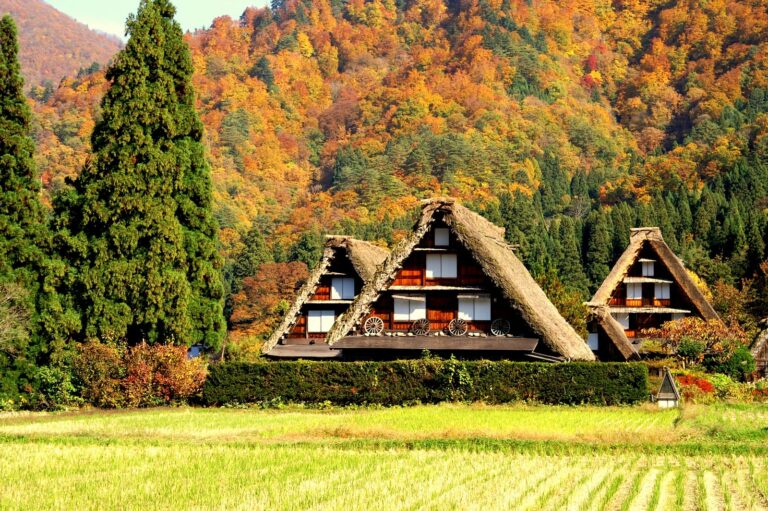
Shirakawa-go, nestled in the remote mountains of Gifu Prefecture, is a living testament to Japan’s rich cultural heritage and architectural ingenuity. This UNESCO World Heritage site is famed for its traditional gassho-zukuri farmhouses, whose steep thatched roofs, designed to resemble the hands of monks in prayer, are a marvel of functional beauty, enabling them to withstand the heavy snowfall that blankets the region in winter. The largest village, Ogimachi, appears as a scene from a fairy tale, with its historic homes set against a backdrop of lush mountains and flowing rivers, offering a glimpse into a way of life that has been preserved for centuries.
Visiting Shirakawa-go is like stepping into a bygone era, where the pace of life slows and the natural world takes center stage. The village’s scenic beauty is matched by the warmth of its community and the depth of its history. Visitors can explore several of the gassho-zukuri houses, some of which have been converted into museums, guesthouses, and restaurants, providing an immersive experience into the region’s culture and traditions. Seasonal changes transform the landscape into a palette of endless variety, from the vibrant greens of spring and summer to the fiery hues of autumn and the pristine whites of winter, making every visit unique. Beyond its visual allure, Shirakawa-go offers insights into traditional Japanese crafts, cuisine, and agricultural practices, enriching the visitor’s understanding of this extraordinary cultural landscape. Shirakawa-go is not just a destination; it’s an experience that connects the past with the present, inviting travelers to discover the enduring beauty and spirit of rural Japan.
Gifu Castle
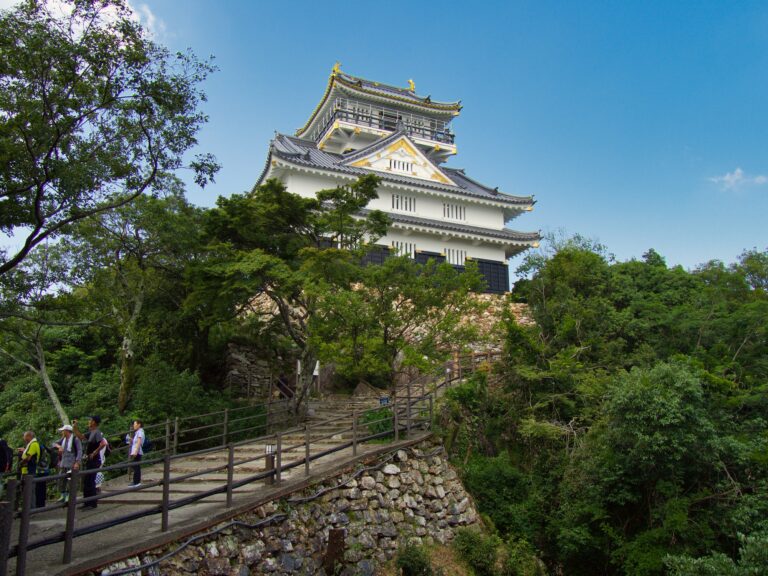
Gifu Castle, perched atop Mount Kinka in the heart of Gifu Prefecture, stands as a silent sentinel with a storied past that stretches back to the 16th century. Originally known as Inabayama Castle, it was a key fortress in the tumultuous Sengoku period, famously seized by Oda Nobunaga, one of Japan’s most powerful and influential daimyo, who made it his stronghold and renamed it Gifu Castle. This historical monument not only offers a window into Japan’s feudal era and the strategic military architecture of the time but also serves as a testament to the ambition and prowess of Nobunaga, whose quest for unification left an indelible mark on Japanese history.
Today, Gifu Castle is a compelling attraction for history buffs and casual visitors alike, offering breathtaking panoramic views of Gifu city and the surrounding Nagara River from its summit. The journey to the castle is an adventure in itself, with the option to hike the well-maintained trails or take a scenic ride on the cable car. The castle museum houses an impressive collection of artifacts, including armor, weapons, and personal items belonging to Nobunaga, providing a deeper understanding of the castle’s historical significance and the life of its most famous occupant. The castle grounds and the adjacent Gifu Park also feature historical markers and statues commemorating key figures and events, making a visit to Gifu Castle a rich educational experience. Surrounded by natural beauty and steeped in history, Gifu Castle is a must-visit destination that captures the essence of Japan’s feudal past and the enduring spirit of its people.
Takayama Old Town
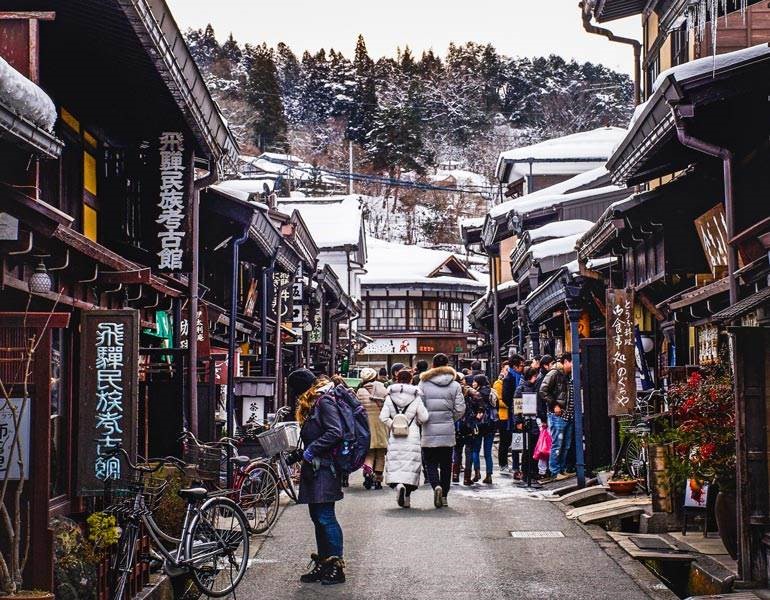
Takayama Old Town, nestled in the heart of the Japanese Alps in Gifu Prefecture, is a beautifully preserved slice of the Edo period (1603-1868) that seems to have stood still in time. This historic area, known as Sanmachi Suji, is characterized by its narrow streets lined with centuries-old merchant homes, sake breweries, and traditional shops, all set against a backdrop of stunning mountain scenery. The charm of Takayama Old Town lies not only in its architectural beauty and historical significance but also in the warm hospitality of its residents, making it a captivating destination for visitors seeking a glimpse into Japan’s rich cultural heritage.
Walking through the cobblestone streets of Takayama Old Town, visitors are transported to a bygone era, with the opportunity to explore quaint shops selling local crafts, such as intricately carved woodwork and Hida textiles, and to taste regional delicacies like Hida beef. The area is also famous for its sake, with several old breweries offering tastings of their finely crafted brews, distinguished by the pure mountain water used in their production. Seasonal festivals add to the allure of Takayama, with the spring and autumn festivals showcasing elaborate floats and traditional puppetry, drawing crowds from across the globe. Whether marveling at the skillfully preserved buildings, savoring the local cuisine, or simply soaking in the atmosphere of this historic town, a visit to Takayama Old Town offers a profound connection to the past, embodying the timeless beauty and enduring traditions of Japan.
Gero Onsen
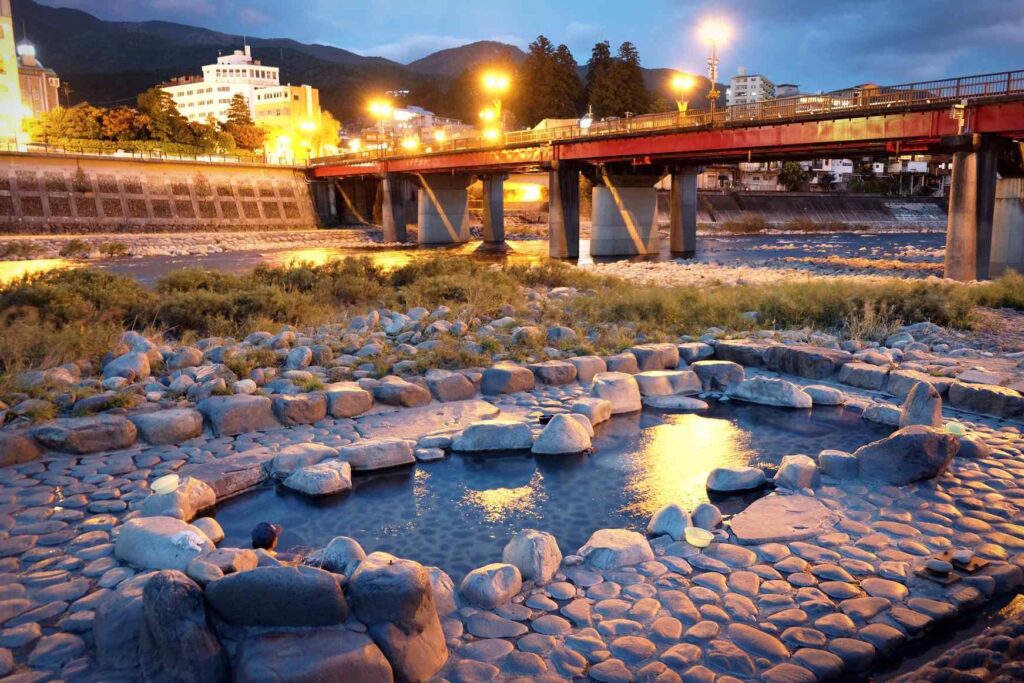
Gero Onsen, nestled along the Hida River in the mountainous heart of Gifu Prefecture, is celebrated as one of Japan’s top three hot spring destinations. Revered for centuries for its healing waters, this charming town offers a quintessential onsen experience, blending therapeutic relaxation with scenic beauty and warm hospitality. The legend of Gero Onsen’s therapeutic properties dates back over a thousand years, making it a historic site for rejuvenation and a cornerstone of the region’s cultural heritage.
Visitors to Gero Onsen can immerse themselves in a variety of public baths and private ryokans, each offering the soothing embrace of natural hot spring waters believed to alleviate a myriad of ailments. The town’s picturesque setting, with its river views and surrounding mountains, adds to the tranquil ambiance, making it an ideal retreat for those seeking peace and relaxation. Beyond the baths, Gero Onsen encourages exploration of its rich culture through attractions like the Gero Onsen Gassho Village, showcasing traditional thatched-roof houses, and the open-air museum, which offers hands-on experiences with local crafts. Evening strolls along the river, complemented by the soft glow of lanterns, allow visitors to soak in the serene atmosphere of this historic town. Gero Onsen represents the perfect harmony of nature’s bounty and traditional Japanese hospitality, promising a restorative escape that nourishes both body and soul.
Nagara River
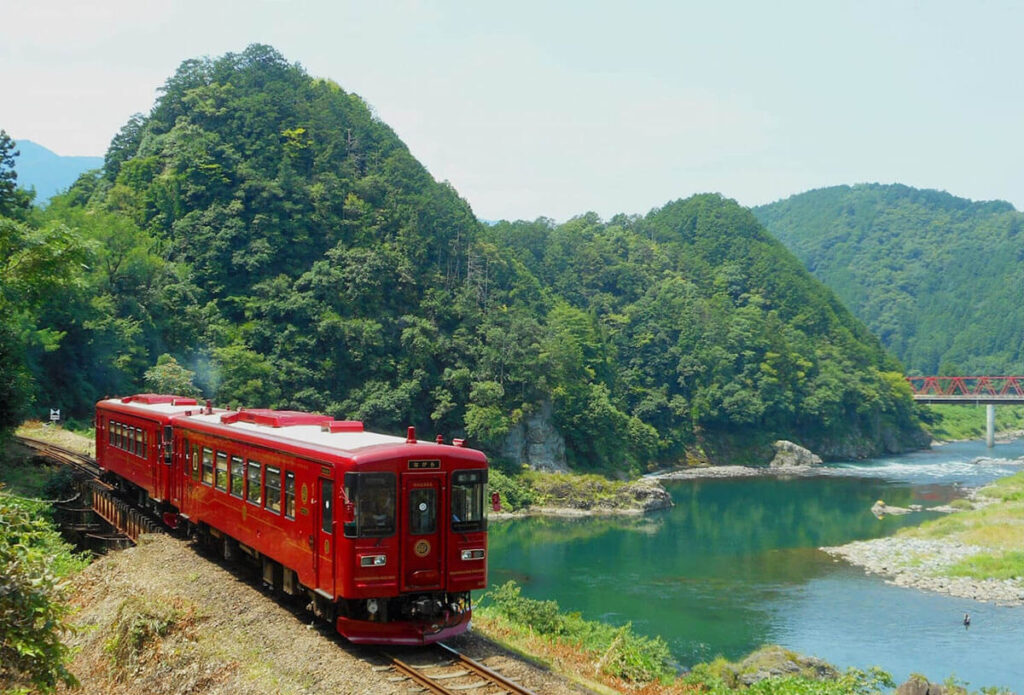
The Nagara River, flowing gracefully through the heart of Gifu Prefecture, is one of Japan’s most pristine waterways, renowned for its natural beauty and cultural significance. Stretching over 166 kilometers, this river is not only a lifeline for the communities that dwell along its banks but also a source of inspiration, recreation, and tradition. The Nagara River’s clear, flowing waters set against the backdrop of Japan’s lush landscapes create a picturesque scene that changes with the seasons, offering breathtaking views of cherry blossoms in spring, vibrant greenery in summer, fiery leaves in autumn, and serene snowscapes in winter.
One of the most enchanting experiences the Nagara River offers is the traditional ukai (cormorant fishing) – a practice that has been continued for over 1,300 years and is performed by master fishermen who use trained cormorants to catch sweetfish. This ancient method of fishing, conducted on wooden boats under the cover of darkness, illuminated only by burning pine torches, provides a mesmerizing spectacle that attracts visitors from around the world. Additionally, the river is a popular spot for various water sports, including rafting and canoeing, allowing adventurers to immerse themselves in the natural beauty of the region. Along its course, the Nagara River passes through historical towns and past landmarks like Gifu Castle, enriching its shores with a deep sense of history and culture. Whether you’re drawn to its scenic beauty, intrigued by its traditional fishing methods, or looking to explore its rich cultural heritage, the Nagara River in Gifu Prefecture offers a tranquil yet vibrant experience that captivates the heart of every visitor.